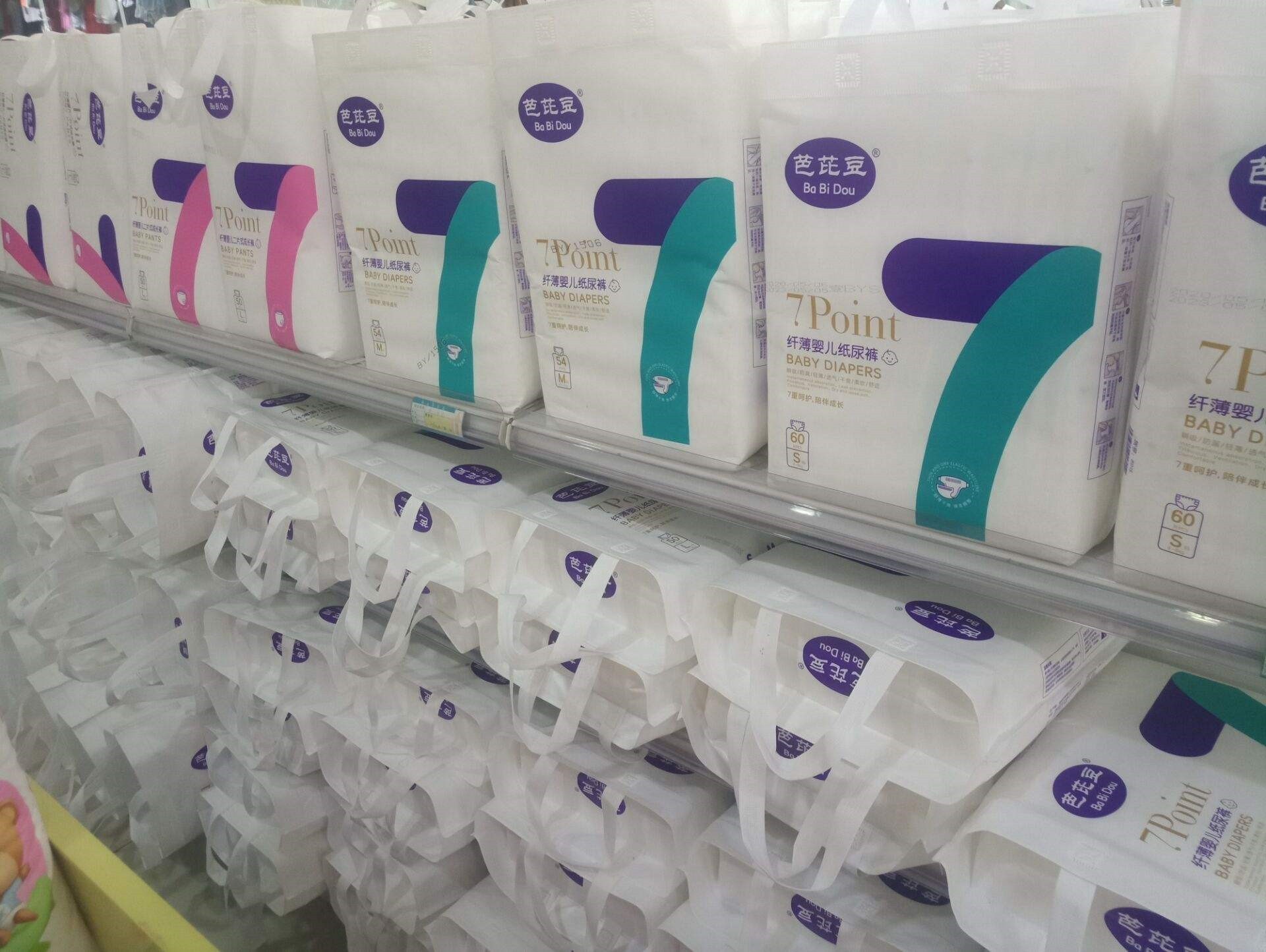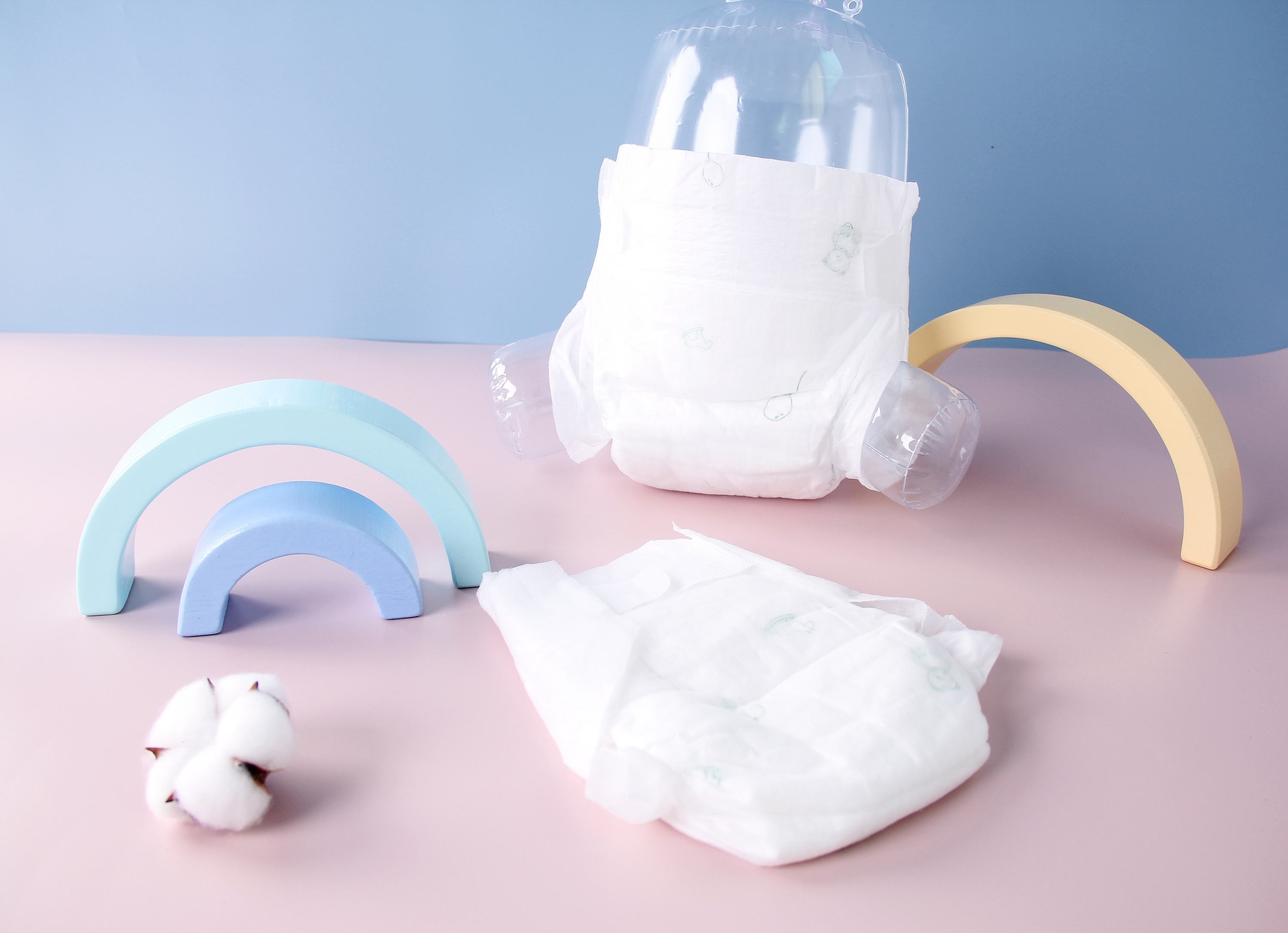According to market research, nearly half of consumers are dissatisfied with the breathability, liquid absorption, permeability and leak-proof performance of baby diaper.baby pants.nappy products currently on the market, but are more satisfied with the elasticity of the elastic waist, indicating the comfort and resistance of the product. Leakage can not meet the requirements of consumers. To this end, the material properties of the product need to be tested and further analyzed. The following information can be obtained from the test results.
Through the test of the related properties of the surface layer and the diversion layer of the six samples, it is concluded that the liquid penetration performance of the surface layer is ranked from superior to inferior: 1#, 5#, 6#, 4#, 3#, 2#; The longitudinal diffusion length of the stream layer is arranged as 5#, 6# and 1# from long to short. The 1# surface layer material is cotton soft non-woven fabric, which has the shortest liquid penetration time and the best permeability. At the same time, the liquid permeability of hot air nonwovens is better than that of hot rolled nonwovens. The 5# diversion layer has the best longitudinal diffusion performance. In the case of the same material, the design length is short, and the longitudinal diffusion performance of the product mounted in the middle of the absorbent core layer and the surface is longitudinally textured design is the best.

Through the test of the absorption performance of baby diaper and its absorbent core layer, it is concluded that the liquid absorption performance of 6 kinds of baby diaper and the absorbent core layer is ranked 6#, 5#, 1#, 3#, 2#, 4# from superior to inferior. 6# core material is a mixture of fluff pulp and super absorbent resin, which has the best water absorption. Liquid uptake by the absorbent core is increased if an infusion layer structure is included. The liquid absorbency of the product with the diversion layer is greater than that without the diversion layer. The liquid absorption of the product is positively correlated with the liquid absorption of the absorbent core layer. The regression equation is: y=0.653x+166.719, and the correlation coefficient is 0.984.

Through the air permeability test of baby diaper and its back layer, it is concluded that the air permeability of 6 kinds of baby diaper and its back layer is ranked from good to bad: 5#, 4#, 2#, 3#, 6#, 1#. The 5# back layer material is PE perforated film, which has the best air permeability, followed by the 4# silk breathable bottom film and the 2# composite breathable cotton soft bottom film, and the 1# PE film has the worst air permeability. There is a positive correlation between air permeability and back air permeability. The regression method is: y=0.288x+0.389, and the correlation coefficient is 0.937.
By testing the gram weight, average pore size and anti-hydrostatic pressure value of the back, it is concluded that the anti-hydrostatic pressure performance of the back of the six products is ranked from good to bad: 1#, 2#, 6#, 3#, 5#, 4#. 1# PE film has the best hydrostatic pressure resistance, and 4# silk breathable bottom film has the worst hydrostatic pressure resistance. The gram weight of the backing layer material is positively correlated with the anti-hydrostatic pressure value of the backing layer, and its pore size value is negatively correlated with the anti-hydrostatic pressure value. The multiple regression equation is y=0.385xi-0.123x2-0.589, and the correlation coefficients of xi, x2 and y are 0.910 and 0.903, respectively.

After the test, it can be known that different materials used in baby diaper.baby pants.nappy products have different effects on product performance. Therefore, manufacturers need to understand the needs of users in advance during the manufacturing process, and then select suitable materials according to their needs.
Comment(0)
You can comment after
SIGN IN